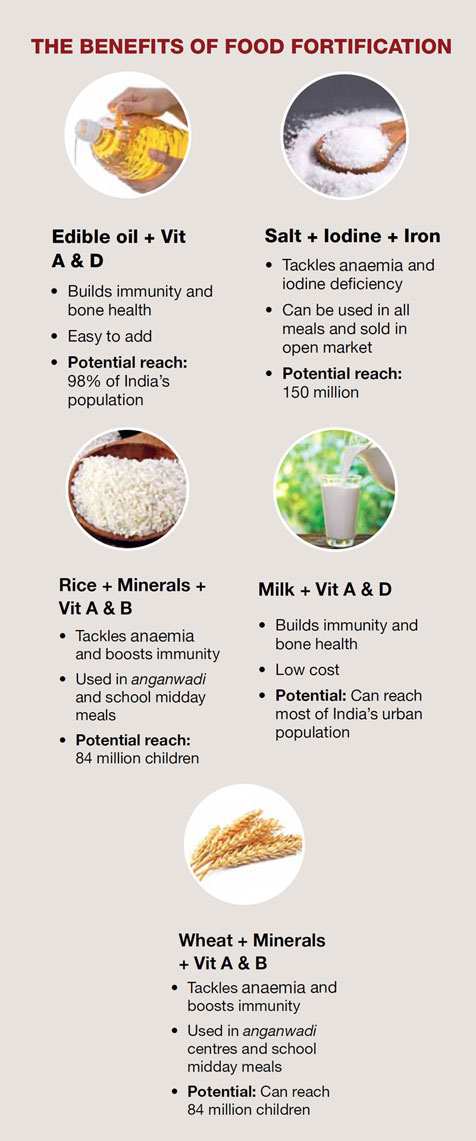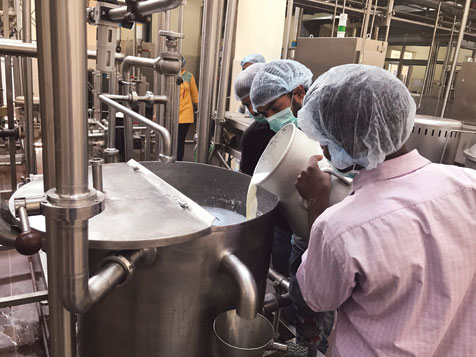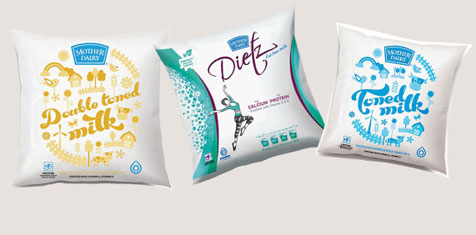Staple solutions
Food fortification is the main course in a programme that is strengthening nutritional safety and ensuring the security of what we eat
Widespread nutritional deficiencies are a problem across the world. In India, micronutrient deficiencies are a serious concern, posing as they do serious health risks especially for people considered vulnerable, including women of reproductive age and children who are often underweight and anaemic.
Food fortification has proved to be a simple and cost-effective approach that can be rolled out widely to ensure that millions of people get the vital building blocks for good health, immunity and overall wellbeing. The process of fortification involves adding vitamins A and D to milk and edible oil, and minerals and vitamins — such as iron, folic acid, vitamin B12, iodine and zinc — to staple foods such as rice, wheat flour and salt.
Fortification will help address the issue of micronutrient deficiencies in India’s population. The Tata Trusts have been a leading support organisation in India’s most recent food fortification drive, and have been promoting it and working for its extensive adoption by the government and industry. To make it a reality, the Tata Trusts have partnered with food safety regulator Food Safety and Standards Authority of India (FSSAI) to set up a Food Fortification Resource Centre (FFRC).
Pawan Kumar Agarwal, CEO, FSSAI, says the role of FFRC goes beyond enforcing standards. “We took it upon ourselves to promote fortification since we have the outreach to industry,” he says. The organisation has been active in trying to build consensus and confidence among policymakers, the government and scientists.
United effort
The Trusts fund FFRC, while development partners such as WFP (World Food Programme), PATH and GAIN (Global Alliance for Improved Nutrition) and others lend on-ground support.
FFRC’s role ranges from policy advocacy with the government to developing the needed skills for fortification, capacity-building, and training for industry, food safety officers and lab assistants, along with creating awareness around the need for fortification.
“Together, we have developed a standard protocol for vitamin A and D testing in milk,” says Vivek Arora, senior advisor, Tata Trusts, and the lead resource for fortification efforts in India. While fortification is currently voluntary, a network of around 3,000 food safety officers are stationed across the country and available to help ensure adherence to standards.
Fortification is a good strategy to address nutritional deficiencies on a large scale as it does not interfere with the existing food habits or purchasing power of people. “It does not aim to change food habits or promote supplementation; so no extra effort is required. It is also the easiest and most cost-effective way of reaching the nutrients to a large population,” says Mr Agarwal.
Five staples — rice, wheat flour, edible oil, salt and milk — have been identified for this programme as they are the base ingredients for cooking and consumption among people at all socio-economic levels.
“These staples are vehicles for fortification to reach the population and our focus is on fortifying them with micronutrients,” says Mr Agarwal.
Edible oil reaches 98% of the households, and is therefore a good vehicle to carry fat soluble vitamins like A and D. Together with GAIN and FFRC, the Tata Trusts have been able to fortify 47% of the leading brands of edible oil in the market.
Today fortified oil reaches approximately 250 million people in India, and has the potential to positively impact the health of a much larger proportion of the population.“We got most traction with edible oils,” Mr Agarwal adds.
Efforts are now on to get micro, small- and medium-sized producers across 10 Indian states to adopt oil fortification. FSSAI is also considering making fortification of packaged refined oil mandatory in some time.
Double fortification of salt is already being done widely. In the case of rice fortification, the process is far more complex. Fortified rice kernels have to be blended in a 1:100 ratio with normal rice. The kernels, which are similar to rice grains in appearance, are reconstituted from powdered rice blended with vitamin and mineral pre-mix.
Fortification of wheat flour poses an even bigger challenge. The simplest is milk, where fortification is done by blending a specified dosage of concentrated liquid emulsion or premix to the milk, ensuring that the level of added vitamins is within the recommended dietary allowance limits as per the food regulatory guidelines.
Making milk better
At 164 million tonnes, India is the largest producer of milk worldwide. Studies have suggested that over 70% of India’s population is deficient in vitamin D. Further, over a quarter of the world’s total vitamin A deficient pre-school children live in India, and around a third of them show clinical signs of vitamin A deficiency.
Among the staples, the efforts for milk fortification is being driven mainly by the Tata Trusts, for which they have partnered with the National Dairy Development Board (NDDB) to reach out to state cooperative dairies.
In the initial year of engagement, the Trusts handhold the fortification process, from conducting trials and sample testing in National Accreditation Board for Testing and Calibration Laboratories (NABL) accredited laboratories as per FSSAI standards, to arranging the fortificant premix and helping with consumer awareness and communication campaigns.
The first to adopt was Mother Dairy, followed by the Jharkhand Dairy Federation with its Medha brand, in May 2017. So far, 13 state milk cooperative federations have taken up milk fortification, including Haryana, Punjab, Uttar Pradesh, Rajasthan, Madhya Pradesh, Chhattisgarh, Odisha, Gujarat and Karnataka.
These cooperatives together fortify 7.2 million litres a day out of a combined fortifiable milk capacity of 22 million litres per day. With fortification of another 8 million litres per day planned over the next few months, about 70% of cooperative milk would be fortified.
In the second phase, the Trusts plan to target private dairy producers where the fortifiable milk potential is around 19 million litres per day. “We are confident that our work with the state dairy cooperatives will create peer pressure on private players to follow suit,” says Mr Arora.
School milk fortification through the ‘Gift Milk’ scheme is another important initiative in this direction. Under this, the state governments of Haryana, Jharkhand, Madhya Pradesh and Chhattisgarh have been ensuring that the flavoured milk being supplied through the ICDS and midday meal platforms is fortified with vitamins A & D.
Low cost, high gain
The cost of milk fortification is low — less than 3 paise per litre — and there is no change in flavour or taste. The bigger challenge, though, is in building consumer awareness about the benefits and availability of such milk. Hence marketing and communication are key areas.
Work is underway to develop generic communication around the benefits of fortification to support the brand-specific advertising being developed by dairy cooperatives. FFRC and the Trusts have also started using social media to spread their message on fortification.
The larger and large-scale benefits of food fortification will take some time to realise. But the efforts of the Tata Trusts in ensuring better health for India’s citizens are already bearing fruit.



Starting early

Mother Dairy was the earliest adopter of milk fortification when, in 1984, it began fortifying its coin-operated, bulk- vended milk with vitamin A for sale in New Delhi. It wasn’t surprising then that in November 2016, soon after the programme was launched, Mother Dairy was the first off the block to double-fortify its bulk-vended milk with vitamins A and D. This milk is available across its 795 booths and 1,700 vending units in the Delhi region. Fortification of packaged milk began in January 2017 with the low fat variants.
“Vitamin A and D deficiencies in India are a matter of concern as they result in issues related to impaired vision, osteoporosis and other health problems. Such deficiencies are also linked to today’s lifestyle, with very limited exposure to the sun. It is therefore imperative to fortify milk,” says Srinivasan T, chief quality officer, Mother Dairy.
Despite its own stringent quality and testing processes, the challenge with fortified milk was in ensuring that the tests were accurate since the fortifying ingredients need to strictly abide by recommended dietary allowance standards. “Quality control is a critical part of fortification,” says Kajal Debnath, DGM, scientific, regulatory and nutrition affairs at Mother Dairy.
For this, its Central Analytical Lab team was trained for vitamin D analysis at the renowned CALF (Centre for Analysis and Learning in Livestock and Food) lab at the National Dairy Development Board headquarters in Anand in Gujarat. Since, 2017 Mother Dairy has acquired the additional equipment for vitamin A & D testing and analysis in-house. “The skills required to analyse the results consistently are tricky, but we have mastered them,” Mr Debnath adds.
Today, Mother Dairy produces 15,000 tonnes of fortified oil annually under the Dhara brand and 3 million litres of fortified milk per day across its manufacturing locations in Delhi, Mumbai, Hyderabad, Nagpur and Kolkata, making it the leading cooperative dairy in India in food fortification.